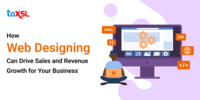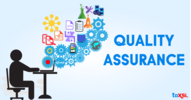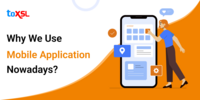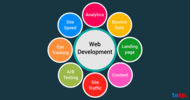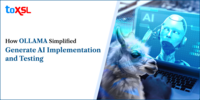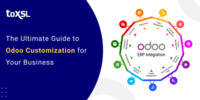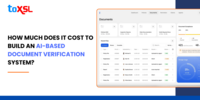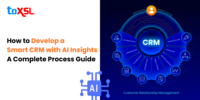- Oct 10, 2025
- ERP/CRM Applications
- 5523
Share this post on:
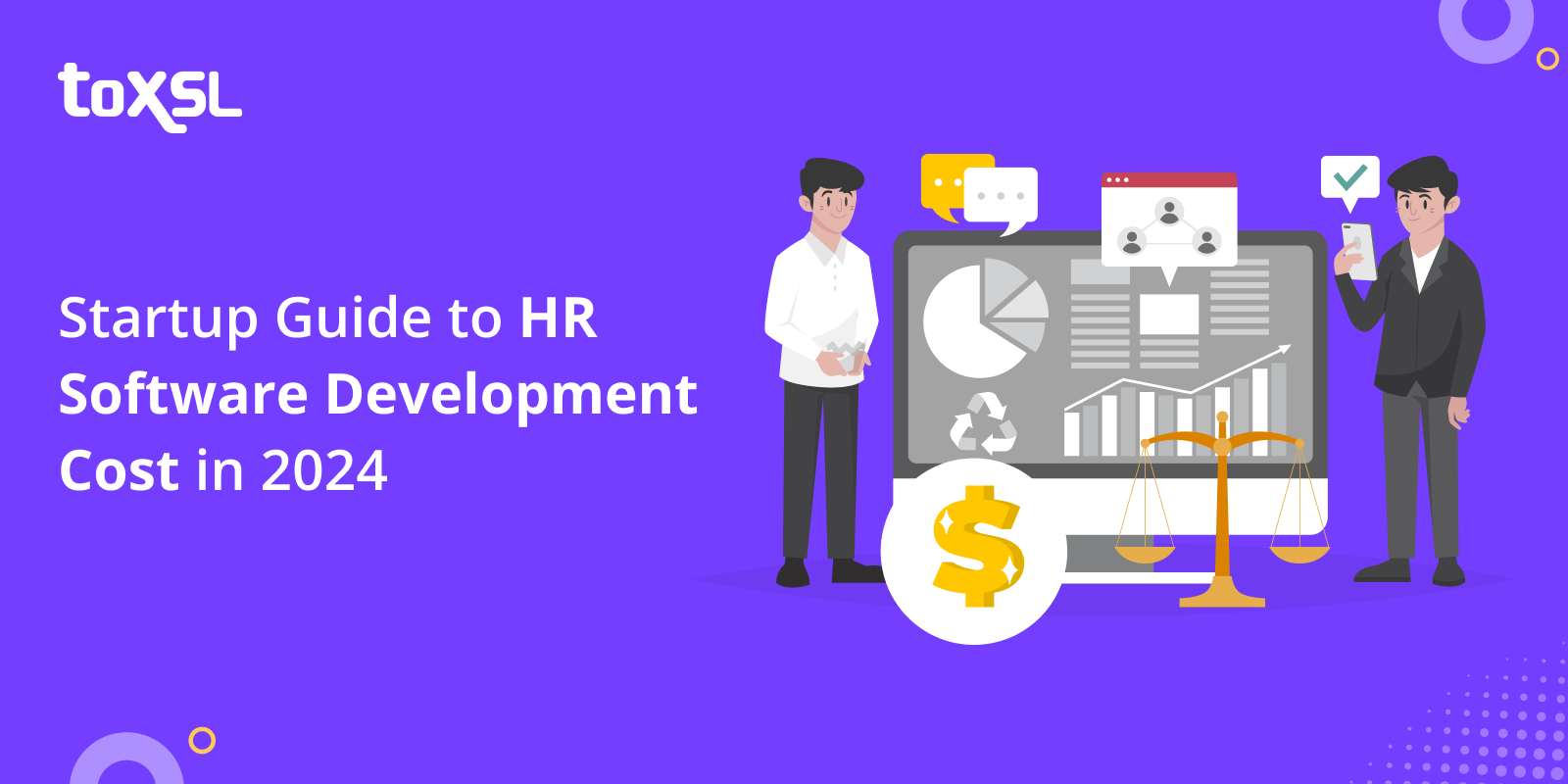
Human Resource Management Systems (HRMS) are software solutions designed to streamline and optimize various HR processes, such as recruitment, employee management, payroll, and benefits administration. As businesses continue to recognize the importance of efficient HR operations, the demand for HRMS has grown significantly. However, understanding the cost of implementing an HRMS can be a challenging task, as pricing varies depending on several factors. In this comprehensive guide, we will explore the different aspects that influence HRMS software costs and provide an overview of the expected pricing trends for 2024.
An HRMS software is a solution that helps organizations manage their workforce more efficiently. It typically includes modules for recruitment, onboarding, performance management, employee data management, payroll processing, benefits administration, and compliance management. By automating and centralizing HR processes, an HR management system can help businesses save time, reduce errors, and improve employee satisfaction.
Average HR Software Cost Estimation
The average cost of building a Hr software with basic and unique features can range from $50,000 to $200,000, which often includes features like attendance monitoring, leave management, and custom features. Let us learn about the cost structure and guide of HRMS in 2024:
Cost Structure of HRMS: HR Management System solutions can be categorized into three main cost structures:
Perpetual License: In this model, businesses purchase a license for the human resource management software and pay for ongoing maintenance and support. The cost of a perpetual license is typically higher upfront but has lower long-term costs.
Subscription-based: In a subscription-based model, businesses pay a recurring fee for access to the HRMS software. This model often includes maintenance, support, and upgrades as part of the subscription. Subscription-based HRMS solutions may have lower upfront costs but higher long-term costs.
Open-Source: Open-source human resource management software solutions are free to use, but businesses may incur costs for customization, implementation, and support.
Pricing Guide 2024:
Here is a rough estimate of the HR software pricing range for different types in 2024:
1. Cloud-based HRMS: $50 to $300 per user per month (depending on the vendor and features required).
2. On-premise HRMS: $5,000 to $20,000 or more for a basic implementation, plus annual maintenance fees.
3. Hybrid HRMS: $1,000 to $10,000 per user for the core system, plus additional costs for customization and integration.
4. Open-source HRMS: Free or low-cost, with varying costs for customization and support.
The Most Popular Global HR Software and Their Development Cost
As the global workforce becomes more interconnected, human resource (HR) software has become an essential tool for managing employee data and processes. In this blog post, we will explore the most popular global HR software and their development cost.
1. jiHRM:
jiHRM is a cloud-based HR Solution for Businesses that provides tools for recruitment, onboarding, performance management, time-off tracking, and more. The development cost of jiHRM ranges from $100,000 to $500,000, depending on the customization requirements.
2. Workday:
Workday is one of the most popular HR automation software used by companies worldwide. It offers a comprehensive suite of tools for recruitment, talent management, time and attendance tracking, payroll processing, and benefits administration, with pricing ranging from $500,000 to $1 million depending on the complexity of the implementation and the number of users, which makes it a full-scale enterprise alternative compared to platforms like Lattice or Officevibe, and their competitors that are more affordable but focus mainly on performance management.
3. ADP Workforce Now:
ADP Workforce Now is a comprehensive HR software that offers tools for recruitment, time and attendance tracking, payroll processing, benefits administration, and compliance management. The HR software pricing cost of ADP Workforce Now ranges from $200,000 to $1 million, depending on the level of customization required.
4. UltiPro:
UltiPro is a cloud-based HR software that provides tools for recruitment, performance management, time and attendance tracking, payroll processing, and benefits administration. The development cost of human resource management software offered by UltiPro ranges from $100,000 to $500,000, depending on the customization requirements.
5. Rippling:
Rippling is a cloud-based HR software that provides tools for recruitment, onboarding, performance management, time-off tracking, and more. The development cost of Rippling ranges from $100,000 to $500,000, depending on the customization requirements.
6. JazzHR:
JazzHR is a cloud-based HR automation software that offers tools for recruitment, performance management, time and attendance tracking, payroll processing, and benefits administration. The HR software pricing of JazzHR ranges from $100,000 to $500,000, depending on the customization requirements.
7. Paycom:
Paycom is a comprehensive HRMS software that provides tools for recruitment, performance management, time and attendance tracking, payroll processing, and benefits administration. The development cost of Paycom ranges from $200,000 to $1 million, depending on the complexity of the implementation and the number of users.
Factors That Impact HRMS Software Cost
When considering implementing human resource management software, it’s essential to understand the various factors that can impact the cost. The cost of HR software can vary significantly based on several key factors. Understanding these factors is crucial for making informed decisions and budgeting effectively. Here are the top 8 factors that can impact the cost of HR software:
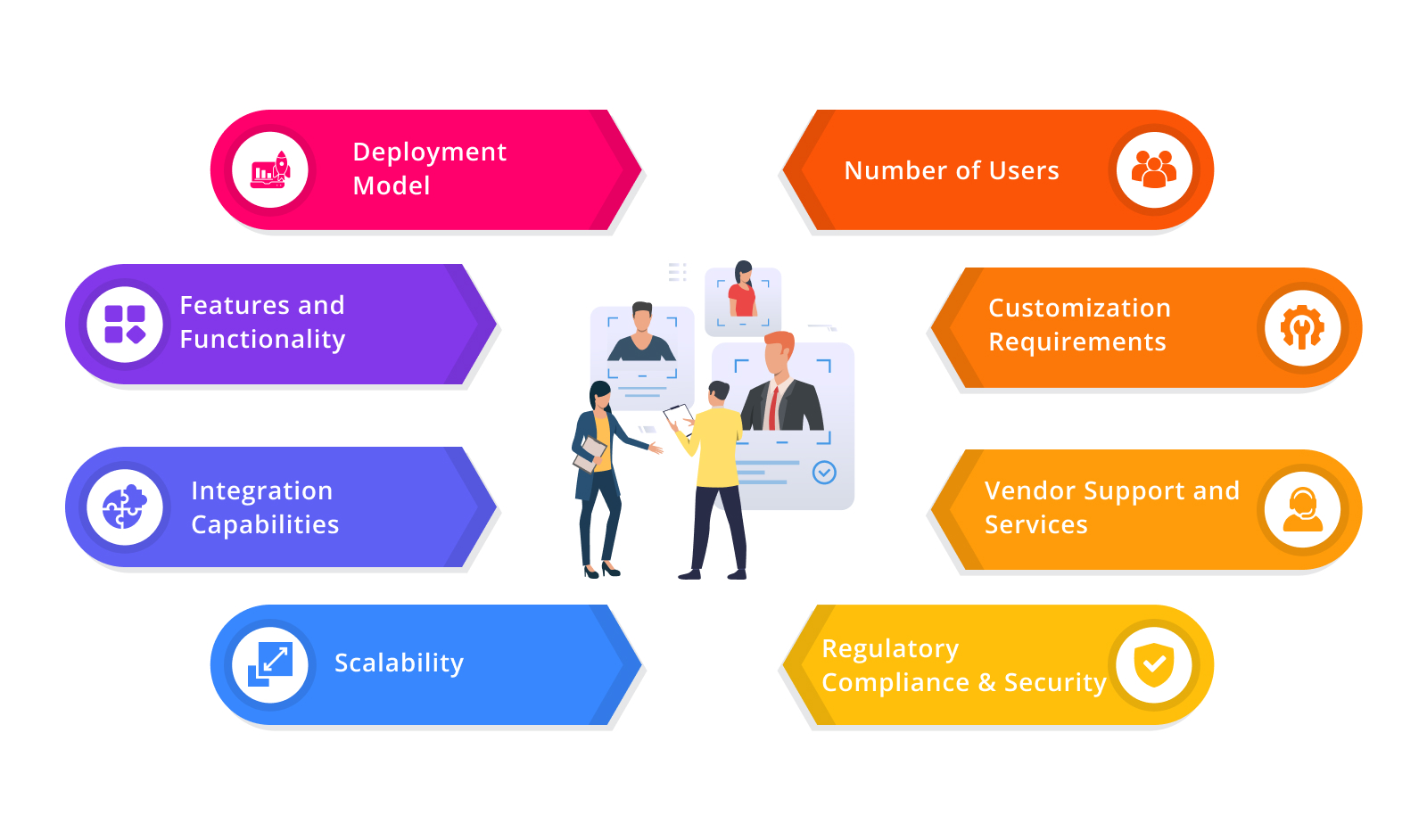
1. Deployment Model: The deployment model of HR management systems plays a significant role in determining their cost. On-premises solutions typically involve higher upfront costs for hardware, installation, and maintenance, while cloud-based or SaaS (Software as a Service) solutions often have a subscription-based pricing model.
2. Number of Users: The number of users who will be using the HR software directly influences the overall cost. Many HR software providers base their pricing on the number of users or employees within an organization. As the number of users increases, so do the licensing and subscription costs.
3. Features and Functionality: The breadth and depth of features and functionality offered by HR software can impact its cost. More comprehensive systems with advanced features such as performance management, payroll integration, and analytics may come at a higher price point compared to basic HR software with limited functionality.
4. Customization Requirements: Customization needs can significantly impact the cost of HR software. Organizations with specific requirements or those seeking tailored solutions may incur additional costs for customization, configuration, and integration with existing systems.
5. Integration Capabilities: The ability of HR Solutions for Business to integrate with other business systems such as payroll, accounting, or ERP (Enterprise Resource Planning) systems can affect its overall cost. Seamless integration often requires additional investment in terms of time and resources.
6. Vendor Support and Services: The level of support and services provided by the HR software vendor can influence its total cost of ownership. Factors such as implementation assistance, training, ongoing support, and system updates may be bundled into the overall pricing or offered as add-on services.
7. Scalability: Scalability is an important factor that impacts human resource management software costs, especially for growing organizations. The ability of the software to scale with the organization’s growth without incurring substantial additional costs is a crucial consideration.
8. Regulatory Compliance and Security: HRMS software that complies with industry regulations and offers robust security features may come at a higher price point due to the investments required in ensuring data security, privacy, and compliance with legal requirements.
Step-by-Step HR Software Process to Get Started
Human Resource (HR) software has become an essential tool for businesses to manage their workforce efficiently. Implementing HR software can streamline various HR processes, including recruitment, onboarding, performance management, and payroll. However, getting started with HR software requires careful planning and execution to ensure a smooth transition and maximum benefit. Here is a step-by-step guide to help you get started with HR software:
1. Assess Your Needs and Objectives: Before diving into the selection process, it’s crucial to assess your organization’s specific HR automation software needs and objectives. This involves identifying the pain points in your current HR processes and determining the key areas where HR management systems software can bring significant improvements. Whether it’s automating payroll, enhancing employee engagement, or simplifying compliance management, understanding your goals will guide you in choosing the right HR software solution.
2. Research and Compare HR Software Options: Once you have a clear understanding of your requirements, it’s time to research and compare different HR software options available in the market. Reading reviews, seeking recommendations from other businesses, and attending product demos can provide valuable insights during this stage.
3. Engage Stakeholders and Obtain Buy-In: Implementing HR software is not just an IT initiative; it impacts the entire organization. Therefore, it’s essential to engage key stakeholders across departments, including HR professionals, managers, and employees who will interact with the system. Obtaining buy-in from these stakeholders early in the process can help address concerns, gather valuable input, and ensure a smoother transition.
4. Plan for Data Migration and Integration: If you are transitioning from manual processes or switching from an existing HR system to a new one, data migration is a critical step. Ensure that you have a clear plan for migrating employee data, historical records, and other relevant information into the new HR software system. Additionally, consider how the new HR software will integrate with other existing systems such as payroll or time tracking to avoid data silos.
5. Customization and Configuration: Every organization has its unique workflows and processes. When implementing HR software, consider the level of customization and configuration it offers to adapt to your specific requirements. Whether it’s creating custom fields, defining approval workflows, or configuring access levels, having a tailored approach can maximize the benefits of the HR software for your organization.
6. Training and Change Management: Introducing new HR software involves a change in how employees interact with HR processes. Providing comprehensive training sessions for HR staff, managers, and employees is crucial to ensuring the effective adoption of the new system. Additionally, having a change management plan in place can help address resistance to change and facilitate a smooth transition.
7. Pilot Testing and Feedback: Before fully rolling out the HR software across the organization, consider conducting a pilot test with a smaller group of users. This allows you to gather feedback, identify any potential issues or areas for improvement, and make necessary adjustments before full implementation.
8. Go-Live and Continuous Evaluation: Once all preparations are in place, it’s time to go live with the new HR software system. Monitor its performance closely during the initial phase and gather feedback from users. Continuous evaluation of the system’s effectiveness will help in identifying areas for optimization and ensuring that it continues to meet your evolving HR needs.
How Can ToXSL Technologies Help You With HR Software Cost Estimation?
ToXSL Technologies is a leading software development company that offers comprehensive solutions for HR software cost estimation. Their expertise in developing custom HR software solutions can be instrumental in helping businesses accurately estimate the costs associated with implementing such systems.
Understanding HR Software Cost Estimation
Estimating the cost of HR software involves considering various factors such as the size of the organization, the specific features required, integration with existing systems, customization needs, ongoing support, and maintenance. ToXSL Technologies understands the intricacies involved in this process and provides tailored solutions to meet the unique requirements of each client.
Customized Solutions for Accurate Estimation
ToXSL Technologies leverages its extensive experience in developing HR software to provide customized solutions for accurate cost estimation. By understanding the specific needs of the organization, they can offer insights into the potential costs involved in implementing an HR software solution, ensuring that businesses have a clear understanding of the financial implications.
Expert Guidance and Support
With ToXSL Technologies, businesses can benefit from expert guidance and support throughout the cost estimation process. Their team of professionals can offer valuable advice on optimizing costs while ensuring that the HR software meets all requirements. This level of support can be invaluable in making informed decisions regarding HR software cost estimation.
Leveraging Technology for Efficiency
ToXSL Technologies utilizes cutting-edge technology and industry best practices to streamline the HR software cost estimation process. By leveraging advanced tools and methodologies, they can provide accurate estimates while optimizing the overall cost structure, ultimately delivering value to their clients.
Conclusion
In conclusion, ToXSL Technologies offers specialized expertise in HR software cost estimation, providing customized solutions, expert guidance, and leveraging technology to ensure accurate and efficient estimation processes. Businesses looking to implement HR software can benefit significantly from their comprehensive approach to cost estimation. Contact us and we can help you with HR software development cost estimation by providing customized solutions, expert guidance, and leveraging technology for efficiency.
Frequently Asked Questions
1. How much does an HRMS typically cost?
Ans: The cost of HRMS software varies depending on several factors, such as software licensing, implementation, customization, integration, support, and the number of users. On average, the total cost of ownership for an HRMS can range from $5,000 to $10,000 per year for small businesses to millions of dollars for large enterprises.
2. What is the difference between perpetual licenses and subscription-based models for HRMS?
Perpetual licenses require a one-time payment for the software, while subscription-based models and SaaS solutions involve recurring fees. Perpetual licenses may have higher upfront costs but lower long-term expenses, while subscription-based models offer more flexibility and scalability.
3. How does customization affect the cost of an HRMS?
Customization requirements can significantly impact the cost of an HRMS, as tailoring the system to meet specific business needs may require additional development efforts and professional services. The extent of customization needed will directly influence the overall cost of implementation and maintenance.
4. What are the benefits of cloud-based HRMS solutions?
Cloud-based HR solutions for businesses offer several advantages, including scalability, ease of use, reduced upfront costs, improved data security, and accessibility from anywhere with an internet connection. These benefits make cloud-based HRMS solutions an attractive option for businesses of all sizes.
5. How will AI and machine learning impact HRMS pricing in the future?
The integration of AI and machine learning technologies in human resource management software is expected to become more prevalent in the coming years. This may lead to an increase in pricing for HRMS software with these advanced features, as businesses seek to leverage the benefits of predictive analytics and personalized employee experiences.



